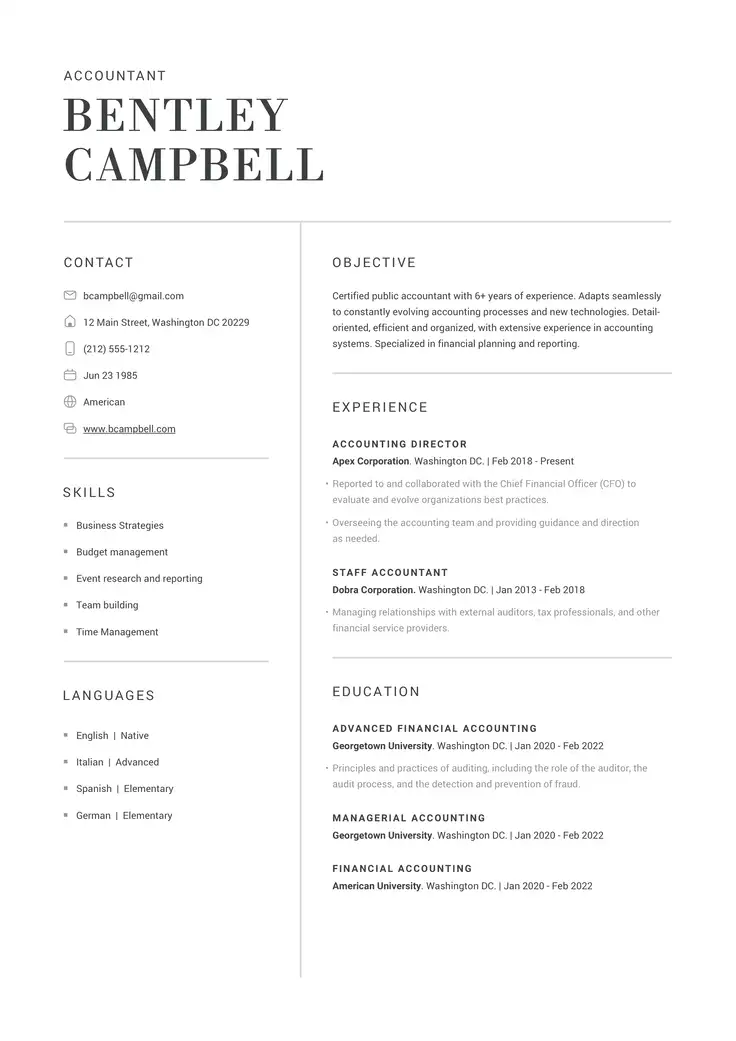Securing a promotion is a significant milestone in any professional’s career. A well-prepared resume is key in presenting your readiness for the next step.
Whether you’re aiming for an internal promotion or exploring opportunities outside your current company, your resume for promotion must reflect your achievements, skills, and professional development effectively.
This article will guide you through the essential steps to prepare your resume for a promotion, ensuring it stands out and highlights your qualifications for career advancement.
Importance of Having Clear Career Goals
The first step for anyone aiming for a career promotion should be setting clear career goals.
Career goals serve as a roadmap, guiding your professional journey and helping you make informed decisions about your career path.
They provide a sense of direction and purpose and also demonstrate to employers that you are ambitious, focused, and committed to your professional development.
Once you have defined your career goals, it’s crucial to align your resume with these aspirations:
Highlight relevant skills and experiences
Use specific examples to showcase how your background aligns with the requirements of the position you are targeting.
Showcase professional development
Include any certifications, courses, or training programs that you have completed to support your career advancement. This demonstrates your commitment to continuous learning and professional growth.
Show quantifiable results
This makes your accomplishments more impactful and demonstrates the value you bring to potential employers.
Align with job descriptions
Use the same language and keywords included in the job ad to increase the chances of your resume passing through applicant tracking systems (ATS).
💡Tip
Start your resume with a career summary that outlines your career goals and key qualifications.
Gather and Organize Your Achievements
In the hustle and bustle of daily work, it’s easy to lose track of your achievements.
There are several effective methods for documenting your achievements and responsibilities. The key is to find a system that works best for you and stick with it consistently.
Here are several ways to keep track of your achievements:
- Handwritten journal: Be sure to include dates and specific details to make the entries as useful as possible.
- Digital tools: For instance, Evernote and Inkpad are popular choices that allow you to take notes on your phone or tablet and sync them across devices. These tools can be particularly useful for capturing achievements on the go.
- Voice recorder: Simply record your thoughts and achievements as they occur, and transcribe them later when you have time.
- Calendar entries: This approach ensures that you have a chronological record of your accomplishments, which can be particularly useful for performance reviews.
- Email folder: Create a dedicated folder in your email account where you can forward any “kudos” emails or notes of appreciation from colleagues and clients. This method keeps all your positive feedback in one place, making it easy to reference later.
- Online portfolio: It not only helps you keep track of your accomplishments but also builds your professional brand.
- LinkedIn: Regularly updating your LinkedIn profile also increases your visibility to potential employers and industry peers.
Tailoring Your Resume for Different Types of Promotions
The approach to tailoring your resume can vary depending on whether you’re applying for an internal promotion or an external opportunity.
Internal promotion
- Emphasize internal achievements: Highlight accomplishments within the company by using specific examples.
- Showcase company-specific skills: Mention proficiency with specific software or methodologies.
- Include internal recommendations: From colleagues or supervisors to add credibility to your achievements.
- Address company challenges: Show how you can address them in the new role.
External promotion
- Highlight transferable skills: Focus on skills and experiences that can be applied to the new role.
- Showcase industry knowledge: Demonstrate your understanding with relevant experiences and achievements.
- Mention professional development: Any relevant training or certifications to show your commitment to continuous learning.
- Tailor professional summary: Name your career goals and the specific skills that make you a strong candidate.
Whether you’re applying for internal or external positions, a tailored resume for promotion that features your professional development and achievements will help you make a compelling case for your career advancement.
Focus on Leadership and Management Skills
When aiming for a promotion, particularly to a leadership or management role, it’s essential to identify the key skills that are relevant to the position. Leadership and management skills involve inspiring and guiding teams, making strategic decisions, and driving organizational success.
Consider including the following leadership and management skills in your resume:
1. Strategic thinking
Example
Developed a digital marketing strategy that increased profitability by 22%.
2. Decision-making
Example
Implemented cost-cutting measures that reduced expenses by 20%.
3. Communication
Example
Led weekly team meetings to ensure clear communication and alignment on project goals.
4. Delegation
Example
Assigned tasks effectively to team members, resulting in a 30% increase in productivity.
5. Problem-solving
Example
Assigned tasks effectively to team members, resulting in a 30% increase in productivity.
6. Empathy
Example
Fostered a supportive team environment by addressing individual team members’ concerns.
7. Adaptability
Example
Adjusted project plans in response to changing client requirements, ensuring timely delivery.
8. Conflict resolution
Example
Mediated team disputes to foster a collaborative work environment, improving team cohesion.
Bonus Tip: Using the STAR Method To Highlight Soft Skills
The STAR method (Situation, Task, Action, Result) is an effective framework for illustrating your soft skills through specific career advancement examples.
This method helps you structure your experiences clearly and concisely, making it easier for hiring managers to understand the context and impact of your actions:
| STAR Component | Description |
|---|---|
| Situation | Describe the context or challenge you faced. |
| Task | Explain your role and responsibilities in that situation. |
| Action | Detail the specific actions you took to address the challenge. |
| Result | Highlight the outcomes and benefits of your actions. |
Example using the STAR method
Let’s see the STAR method in action:
- Situation: “Our team was struggling with communication issues that were causing project delays and misunderstandings.”
- Task: “I was responsible for improving communication and ensuring that everyone was on the same page.”
- Action: “I implemented a new communication protocol, including regular team meetings, clear documentation of project updates, and an open-door policy for addressing concerns.”
- Result: “As a result, project delays were reduced by 25%, and team morale improved significantly, leading to a more cohesive and productive work environment.”
Now see how it’s turned into an experience entry on your resume:
Example
Project Manager | ABC Company | January 2020 – Present
- Reduced project delays by 25% and significantly improved team morale by implementing a new communication protocol, including regular team meetings, clear documentation of project updates, and an open-door policy for addressing concerns.
Use the STAR method to effectively demonstrate your soft skills and provide tangible evidence of your ability to handle complex situations and drive positive outcomes.
Conclusion
Preparing your resume for a promotion is a strategic process that requires careful planning and attention to detail.
By following the steps outlined in this guide, you can create a compelling resume that presents your qualifications and readiness for career advancement.
- Align Your Resume with Your Career Goals
- Highlight Your Achievements and Career Progression
- Emphasize Leadership, Management, and Soft Skills using the STAR method
Need a little more help writing your resume? Try our AI-powered resume builder and get personalized advice every step of the way.


